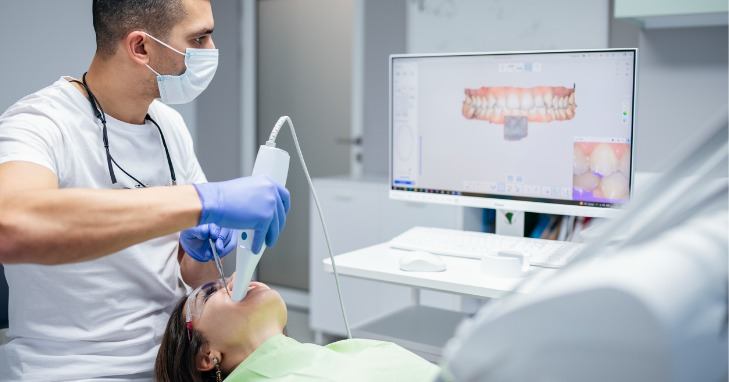Orthodontics is a specialized field within dentistry that focuses on correcting misaligned teeth and jaws to improve both function and aesthetics. It is concerned with diagnosing, preventing, and treating dental and facial irregularities, commonly known as malocclusions.
These conditions can affect how teeth fit together when biting, chewing, and speaking, as well as impact facial symmetry and appearance.
History And Evolution of Orthodontics
The practice of orthodontics dates back thousands of years, with early attempts to straighten teeth documented in various ancient civilizations. Archaeological findings show evidence of rudimentary dental appliances used to move teeth into better alignment. However, it wasn’t until the 18th and 19th centuries that orthodontics began to emerge as a distinct dental specialty with systematic approaches.
SEE ALSO: What Are Factors Contributing to The Cost of Orthodontic Treatment
Early Developments
One of the pioneers in modern orthodontics was Pierre Fauchard, a French dentist often referred to as the “father of modern dentistry.” In the 18th century, Fauchard described various techniques for straightening teeth, including using finger pressure applied at intervals over time. He also introduced the concept of dental appliances, such as braces and bands, to correct dental alignment issues.
Growth of Orthodontics As A Specialty
During the 19th century, orthodontics continued to evolve with advancements in dental science and technology. Dentists experimented with different materials and techniques to improve the effectiveness and comfort of orthodontic treatments.
Edward Angle, an American dentist, is widely regarded as the founder of modern orthodontics. He established orthodontics as a specialized field with systematic classification of malocclusions and development of treatment principles that are still influential today.
Understanding Malocclusions
Malocclusions refer to dental misalignments that can vary widely in severity and complexity. They may involve problems such as:
Overcrowding: Insufficient space for teeth causing them to overlap or twist.
Overbite: Upper front teeth excessively overlap lower front teeth vertically.
Underbite: Lower front teeth protrude past upper front teeth when biting down.
Crossbite: Teeth are misaligned when biting down, with some upper teeth sitting inside lower teeth.
Open bite: Upper and lower teeth don’t meet when biting down, leaving a gap.
Misplaced midline: Center lines of upper and lower teeth don’t align.
Malocclusions can result from genetic factors, childhood habits like thumb sucking, premature loss of primary teeth, dental disease, or trauma. They can affect dental health, causing issues such as difficulty cleaning teeth properly, increased risk of tooth decay and gum disease, jaw pain, and uneven wear of tooth surfaces.
Orthodontic Diagnosis And Treatment
Initial Assessment
Orthodontic treatment begins with a thorough assessment of the patient’s dental and facial structure. This includes a comprehensive examination, dental x-rays, photographs, and sometimes impressions or scans of teeth and jaws.
Orthodontists use these diagnostic tools to evaluate the nature and extent of malocclusions, determine treatment goals, and formulate a personalized treatment plan.
Treatment Options
Orthodontic treatments aim to gradually move teeth into optimal alignment and correct jaw positioning. The choice of treatment depends on the type and severity of malocclusion, patient’s age, and individual preferences. Common orthodontic treatments include:
Traditional Braces: Metal brackets bonded to teeth connected by wires and elastic bands, gradually applying pressure to move teeth.
Clear Aligners: Custom-made clear plastic trays (e.g., Invisalign) that fit over teeth, gradually shifting them into place. They are removable for eating and cleaning.
Lingual Braces: Brackets and wires attached to the inside surface of teeth, making them less visible but potentially more uncomfortable initially.
Functional Appliances: Removable devices (e.g., headgear, expanders) that modify jaw growth and tooth position in growing children.
Retainers: After active treatment, retainers hold teeth in their new position to prevent relapse.
Treatment Process
Active Phase
During the active phase of treatment, patients visit their orthodontist regularly for adjustments and progress checks.
Adjustments involve tightening wires or replacing aligners to continue moving teeth according to the treatment plan. The duration of treatment varies depending on the complexity of the case and the chosen method. On average, orthodontic treatment can range from several months to a few years.
Monitoring and Retention
After achieving desired tooth alignment, patients enter the retention phase. Retainers are worn to maintain teeth in their corrected positions while the surrounding bone and tissues adapt. Initially, retainers are worn full-time and later transitioned to nighttime wear only. Regular follow-up appointments ensure teeth remain stable over time.
Benefits of Orthodontic Treatment
Dental Health
Orthodontic treatment improves dental health by aligning teeth properly, making them easier to clean and reducing the risk of tooth decay and gum disease. Properly aligned teeth also promote better chewing and speech function.
Aesthetic Improvement
Straight teeth and an aligned smile enhance facial aesthetics and boost self-confidence. Orthodontic treatment can improve facial balance by aligning jaws and correcting bite discrepancies.
Preventive Care
Early orthodontic intervention in children can guide proper jaw growth and tooth eruption, potentially preventing more complex issues later in life. Orthodontists monitor dental development and intervene when necessary to optimize oral health outcomes.
Challenges And Considerations
Treatment Duration and Compliance
Orthodontic treatment requires commitment from patients to follow recommended care routines, attend appointments, and comply with wearing appliances as directed. Patient compliance influences treatment success and duration.
Cost and Affordability
Orthodontic treatment costs vary depending on factors like treatment type, duration, and geographic location. Many dental insurance plans cover part of orthodontic treatment for children, while coverage for adults may be limited.
Potential Discomfort
Adjusting to orthodontic appliances can cause temporary discomfort, such as soreness and irritation of gums and cheeks.
Patients typically adapt over time as their mouth adjusts to the appliances.
Conclusion
Orthodontics plays a crucial role in improving dental health, enhancing facial aesthetics, and promoting overall well-being.
By addressing malocclusions and jaw irregularities, orthodontic treatment not only transforms smiles but also contributes to long-term oral health. Advances in technology and treatment options continue to broaden the scope of orthodontic care, making it more accessible and effective for patients of all ages.

